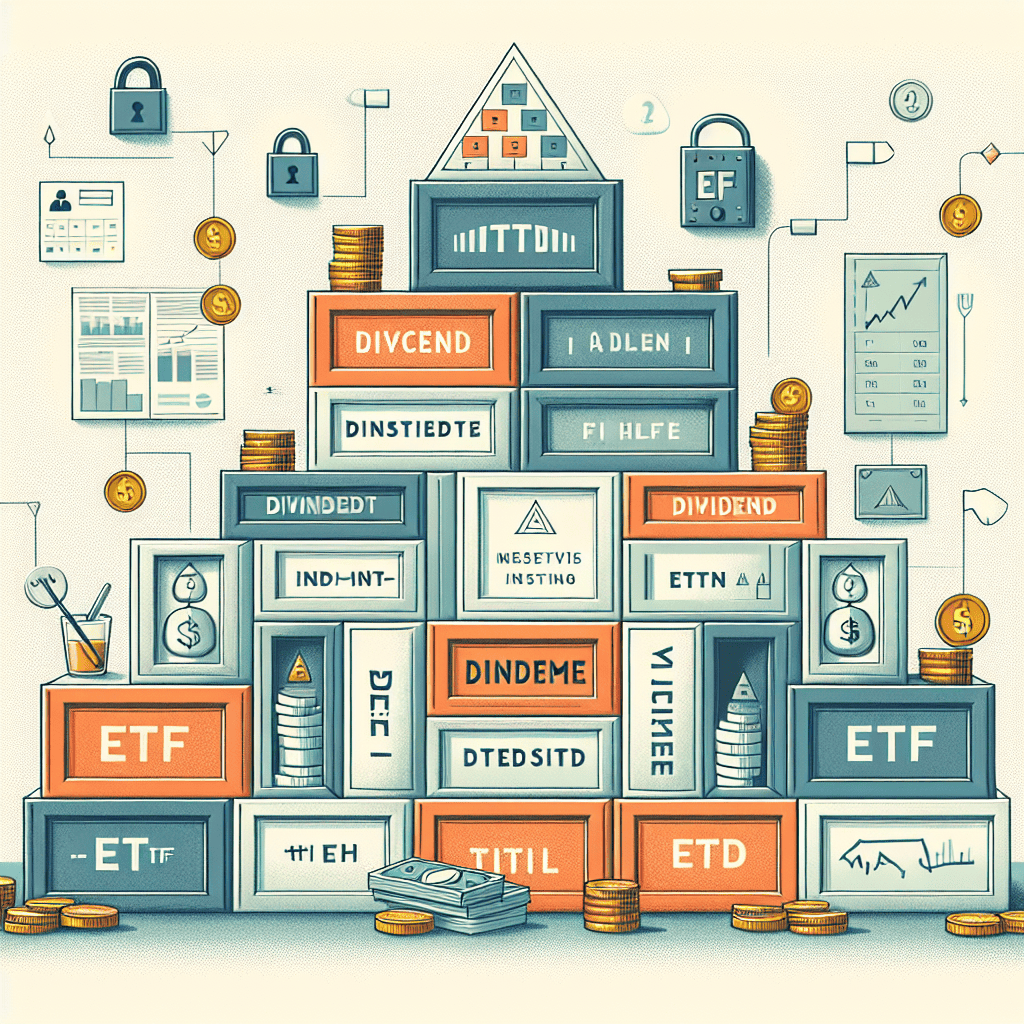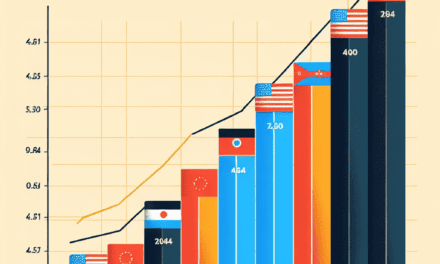“Maximize Your Earnings: Discover the Top 9 Dividend ETFs for Steady Passive Income!”
Introduction
Investors seeking a reliable stream of passive income often turn to dividend-focused exchange-traded funds (ETFs) as a strategic choice. These funds pool together a diversified portfolio of dividend-paying stocks, offering investors the dual benefits of potential capital appreciation and regular income. The top dividend ETFs are typically characterized by their strong track records, low expense ratios, and a focus on companies with a history of consistent dividend payments. In this guide, we explore the top nine dividend ETFs that stand out for their ability to generate passive income, providing insights into their investment strategies, performance metrics, and the types of companies they include. Whether you’re a seasoned investor or new to the world of ETFs, these funds offer a compelling opportunity to enhance your income portfolio.
Overview Of Dividend ETFs
Dividend ETFs, or exchange-traded funds, have become increasingly popular among investors seeking to earn passive income. These financial instruments offer a diversified portfolio of dividend-paying stocks, providing a steady stream of income while mitigating the risks associated with investing in individual stocks. As investors look for reliable sources of income, especially in uncertain economic times, dividend ETFs present an attractive option due to their potential for both income generation and capital appreciation.
To understand the appeal of dividend ETFs, it is essential to recognize their structure and benefits. Unlike individual stocks, which can be volatile and subject to company-specific risks, dividend ETFs spread investments across a wide range of companies. This diversification reduces the impact of any single company’s poor performance on the overall portfolio. Moreover, dividend ETFs are managed by professional fund managers who select stocks based on specific criteria, such as dividend yield, payout consistency, and financial health. This professional oversight ensures that the ETF maintains a balanced and income-focused portfolio.
Another advantage of dividend ETFs is their liquidity. As they are traded on major stock exchanges, investors can buy and sell shares throughout the trading day, just like individual stocks. This flexibility allows investors to respond quickly to market changes and manage their portfolios more effectively. Additionally, dividend ETFs often have lower expense ratios compared to mutual funds, making them a cost-effective choice for income-seeking investors.
When selecting a dividend ETF, investors should consider several factors to ensure it aligns with their financial goals. One crucial aspect is the dividend yield, which indicates the annual income generated by the ETF as a percentage of its current price. A higher yield can be attractive, but it is essential to assess the sustainability of the dividends. Consistent dividend payments over time are often a sign of a stable and reliable ETF. Furthermore, investors should examine the ETF’s underlying holdings to ensure they are comfortable with the sectors and industries represented in the portfolio.
In addition to yield and holdings, the ETF’s historical performance and volatility are important considerations. While past performance is not indicative of future results, it can provide insight into how the ETF has navigated different market conditions. Lower volatility is generally preferred by income-focused investors, as it suggests a more stable investment. Moreover, understanding the ETF’s expense ratio is crucial, as higher fees can erode the overall returns.
As the market for dividend ETFs continues to grow, investors have a wide array of options to choose from. Some ETFs focus on high-yield stocks, while others prioritize companies with a history of increasing dividends. There are also ETFs that target specific sectors, such as utilities or real estate, which are traditionally known for their dividend-paying capabilities. This variety allows investors to tailor their investments to their risk tolerance and income needs.
In conclusion, dividend ETFs offer a compelling opportunity for investors seeking passive income through a diversified and professionally managed portfolio. By carefully evaluating factors such as yield, holdings, performance, and fees, investors can select the right dividend ETF to meet their financial objectives. As part of a well-rounded investment strategy, dividend ETFs can provide a reliable source of income and contribute to long-term wealth accumulation.
Benefits Of Investing In Dividend ETFs
Investing in dividend exchange-traded funds (ETFs) offers a compelling opportunity for individuals seeking to earn passive income while diversifying their investment portfolios. These financial instruments pool together a collection of dividend-paying stocks, providing investors with exposure to a broad range of companies that regularly distribute a portion of their earnings to shareholders. One of the primary benefits of investing in dividend ETFs is the potential for consistent income generation. Unlike individual stocks, which may experience fluctuations in dividend payments, ETFs typically hold a diversified basket of stocks, thereby mitigating the risk of income volatility. This diversification ensures that even if some companies within the ETF reduce or eliminate their dividends, others may continue to provide stable payouts, thus maintaining a steady income stream for investors.
Moreover, dividend ETFs offer the advantage of professional management. These funds are managed by experienced portfolio managers who conduct thorough research and analysis to select high-quality dividend-paying stocks. This expertise can be particularly beneficial for individual investors who may lack the time or resources to conduct such in-depth evaluations themselves. By entrusting their investments to professional managers, investors can benefit from a well-curated selection of stocks that align with their income objectives and risk tolerance.
In addition to providing a reliable income stream, dividend ETFs can also contribute to long-term capital appreciation. Many dividend-paying companies are established, financially stable entities with a track record of growth. As these companies continue to expand and increase their earnings, the value of the ETF may rise, offering investors the potential for capital gains. This dual benefit of income and growth makes dividend ETFs an attractive option for those seeking to build wealth over time.
Furthermore, dividend ETFs offer a level of liquidity and flexibility that is often not available with other income-generating investments, such as real estate or bonds. ETFs are traded on major stock exchanges, allowing investors to buy and sell shares with ease. This liquidity ensures that investors can access their funds when needed, providing a level of financial flexibility that is crucial for managing personal finances effectively.
Another significant advantage of dividend ETFs is their tax efficiency. In many jurisdictions, dividends are taxed at a lower rate than ordinary income, which can enhance the after-tax returns for investors. Additionally, ETFs are structured in a way that minimizes capital gains distributions, further reducing the tax burden on investors. This tax efficiency can be particularly beneficial for those in higher tax brackets, as it allows them to retain a larger portion of their investment returns.
Moreover, dividend ETFs can serve as a hedge against inflation. As the cost of living rises, companies that consistently increase their dividends can help investors maintain their purchasing power. This inflation protection is an important consideration for long-term investors who are concerned about preserving the real value of their income over time.
In conclusion, investing in dividend ETFs offers numerous benefits, including consistent income generation, professional management, potential for capital appreciation, liquidity, tax efficiency, and inflation protection. These advantages make dividend ETFs an appealing choice for investors seeking to earn passive income while building a diversified and resilient investment portfolio. As with any investment, it is important for individuals to conduct thorough research and consider their financial goals and risk tolerance before investing in dividend ETFs.
Criteria For Selecting Top Dividend ETFs
When selecting the top dividend ETFs for earning passive income, investors must consider a variety of criteria to ensure they are making informed decisions. The first and foremost factor to evaluate is the dividend yield, which represents the annual dividend payment as a percentage of the ETF’s share price. A higher dividend yield can indicate a more attractive income stream; however, it is crucial to balance this with the potential risks associated with high yields, such as the sustainability of the dividend payments and the financial health of the underlying companies.
In addition to dividend yield, the expense ratio of an ETF is a critical consideration. The expense ratio reflects the annual fees charged by the fund, expressed as a percentage of the total assets. Lower expense ratios are generally more favorable, as they allow investors to retain a larger portion of their returns. Consequently, when comparing dividend ETFs, it is advisable to select those with competitive expense ratios to maximize net income.
Another essential criterion is the ETF’s track record and historical performance. While past performance is not indicative of future results, a consistent history of dividend payments and capital appreciation can provide some assurance of the fund’s stability and management effectiveness. Investors should examine the ETF’s performance over various market cycles to assess its resilience and ability to generate income during different economic conditions.
Furthermore, the diversification of the ETF’s holdings is a significant factor in mitigating risk. A well-diversified ETF will typically invest in a broad range of sectors and industries, reducing the impact of any single company’s or sector’s poor performance on the overall fund. This diversification can help ensure a more stable income stream and protect against market volatility.
The underlying index that the ETF tracks is also an important consideration. Some ETFs follow indices specifically designed to include companies with strong dividend-paying histories, while others may track broader market indices. Understanding the index methodology can provide insights into the ETF’s investment strategy and the types of companies it includes.
Additionally, the liquidity of the ETF is a practical aspect to consider. Highly liquid ETFs are easier to buy and sell without significantly affecting the market price, which is particularly important for investors who may need to access their funds quickly. Liquidity can be assessed by examining the average daily trading volume and the bid-ask spread of the ETF.
Moreover, the tax implications of investing in dividend ETFs should not be overlooked. Different ETFs may have varying tax treatments based on their structure and the types of dividends they distribute. Investors should be aware of how these factors might affect their after-tax returns and consider consulting with a tax professional if necessary.
Lastly, the reputation and credibility of the fund manager can influence the selection of a dividend ETF. Experienced and reputable fund managers are more likely to make prudent investment decisions and effectively manage the fund’s assets. Researching the fund manager’s history and expertise can provide additional confidence in the ETF’s potential to deliver consistent passive income.
In conclusion, selecting the top dividend ETFs for earning passive income involves a comprehensive evaluation of several key criteria, including dividend yield, expense ratio, historical performance, diversification, underlying index, liquidity, tax implications, and fund manager reputation. By carefully considering these factors, investors can make informed decisions that align with their financial goals and risk tolerance, ultimately enhancing their ability to generate a reliable stream of passive income.
Analysis Of Dividend Yield And Growth

When considering investment options for generating passive income, dividend-focused exchange-traded funds (ETFs) have emerged as a popular choice among investors. These financial instruments offer a diversified portfolio of dividend-paying stocks, providing both income and potential for capital appreciation. In this analysis, we delve into the dividend yield and growth prospects of the top nine dividend ETFs, offering insights into their potential as income-generating assets.
To begin with, dividend yield is a critical factor for investors seeking regular income. It represents the annual dividend payment as a percentage of the ETF’s current share price. A higher dividend yield indicates a greater income return on investment, making it an attractive feature for income-focused investors. However, it is essential to balance yield with the sustainability of dividends, as excessively high yields may signal underlying financial instability within the constituent companies.
Among the top dividend ETFs, the Vanguard Dividend Appreciation ETF (VIG) stands out for its focus on companies with a history of increasing dividends over time. This ETF prioritizes dividend growth, which can lead to a rising income stream and potential capital gains. Similarly, the Schwab U.S. Dividend Equity ETF (SCHD) emphasizes quality and sustainability, selecting companies with strong financial health and consistent dividend payments. These ETFs offer a blend of moderate yield and robust growth potential, appealing to investors seeking long-term income stability.
In contrast, the SPDR S&P Dividend ETF (SDY) and the iShares Select Dividend ETF (DVY) prioritize higher current yields. These ETFs focus on companies with a track record of paying above-average dividends, providing immediate income benefits. However, investors should be mindful of the trade-off between high yield and growth potential, as these ETFs may include companies with limited prospects for dividend increases.
Transitioning to international markets, the iShares International Select Dividend ETF (IDV) offers exposure to high-yielding companies outside the United States. This ETF provides diversification benefits and access to potentially higher yields available in foreign markets. Similarly, the Vanguard International High Dividend Yield ETF (VYMI) targets non-U.S. companies with strong dividend payments, broadening the scope for income generation.
Furthermore, the WisdomTree U.S. Quality Dividend Growth Fund (DGRW) combines a focus on dividend growth with quality metrics, selecting companies with strong earnings potential and healthy balance sheets. This approach aims to capture both income and capital appreciation, appealing to investors seeking a balanced strategy.
Additionally, the Invesco S&P 500 High Dividend Low Volatility ETF (SPHD) offers a unique approach by targeting high-yielding stocks with lower volatility. This ETF aims to provide a stable income stream while minimizing risk, making it suitable for risk-averse investors.
Lastly, the ProShares S&P 500 Dividend Aristocrats ETF (NOBL) focuses on companies that have consistently increased dividends for at least 25 consecutive years. This ETF emphasizes dividend reliability and growth, appealing to investors seeking a dependable income source.
In conclusion, the top nine dividend ETFs offer a range of options for investors seeking passive income through dividends. By analyzing dividend yield and growth prospects, investors can select ETFs that align with their income goals and risk tolerance. Whether prioritizing high current yield, dividend growth, or a combination of both, these ETFs provide valuable tools for building a diversified income-generating portfolio. As always, investors should conduct thorough research and consider their individual financial objectives before making investment decisions.
Risk Factors In Dividend ETF Investments
Investing in dividend ETFs can be an attractive strategy for those seeking to earn passive income. However, like any investment, it is not without its risks. Understanding these risk factors is crucial for investors aiming to make informed decisions. One of the primary risks associated with dividend ETFs is market risk. This is the risk that the overall stock market will decline, which can negatively impact the value of the ETF. Since dividend ETFs are composed of stocks, they are subject to the same market fluctuations as individual stocks. Consequently, during periods of market volatility, the value of dividend ETFs can decrease, potentially affecting the income generated from dividends.
In addition to market risk, interest rate risk is another significant factor to consider. Dividend-paying stocks often become less attractive to investors when interest rates rise. This is because higher interest rates can lead to better returns from fixed-income investments, such as bonds, making them more appealing compared to dividend stocks. As a result, rising interest rates can lead to a decrease in the price of dividend ETFs, thereby impacting the overall return on investment. Furthermore, sector risk is an important consideration, as many dividend ETFs are heavily weighted in specific sectors, such as utilities or financials. These sectors can be more sensitive to economic changes, regulatory shifts, or technological advancements, which can affect their performance. For instance, a regulatory change that impacts the utility sector could lead to a decline in the value of a dividend ETF heavily invested in that sector.
Another risk factor is dividend yield risk. While high dividend yields can be attractive, they may also indicate potential issues with the underlying companies. A high yield might suggest that a company’s stock price has fallen significantly, possibly due to financial instability or declining business prospects. Therefore, investors should be cautious and conduct thorough research to ensure that the high yields are sustainable and not a result of underlying problems. Additionally, currency risk can affect dividend ETFs that invest in international stocks. Fluctuations in currency exchange rates can impact the value of dividends received from foreign investments. For investors in countries with volatile currencies, this risk can be particularly pronounced, potentially leading to reduced income from dividends when converted back to the investor’s home currency.
Moreover, liquidity risk is another factor to consider. Some dividend ETFs may have lower trading volumes, making it difficult to buy or sell shares without affecting the price. This can be particularly problematic during times of market stress when investors may need to liquidate their positions quickly. Lastly, management risk should not be overlooked. The performance of a dividend ETF is influenced by the decisions made by its fund managers. Poor management decisions, such as inadequate diversification or poor stock selection, can negatively impact the ETF’s performance and, consequently, the income generated from dividends.
In conclusion, while dividend ETFs offer an appealing avenue for earning passive income, they are not without risks. Investors must be aware of market, interest rate, sector, dividend yield, currency, liquidity, and management risks when considering these investments. By understanding and carefully evaluating these risk factors, investors can make more informed decisions and better manage their portfolios to achieve their financial goals.
Comparison Of Top Dividend ETFs
When considering investment options for generating passive income, dividend-focused exchange-traded funds (ETFs) have become increasingly popular among investors. These financial instruments offer a diversified portfolio of dividend-paying stocks, providing a steady income stream while mitigating the risks associated with individual stock investments. In this context, it is essential to compare the top dividend ETFs to make informed investment decisions.
To begin with, the Vanguard Dividend Appreciation ETF (VIG) is a prominent choice for investors seeking dividend growth. This ETF focuses on companies with a history of increasing dividends over time, thereby offering potential for both income and capital appreciation. Similarly, the Schwab U.S. Dividend Equity ETF (SCHD) is another strong contender, known for its low expense ratio and a portfolio that emphasizes quality and sustainability of dividends. These characteristics make SCHD an attractive option for cost-conscious investors.
Transitioning to another noteworthy ETF, the iShares Select Dividend ETF (DVY) targets high-yielding U.S. stocks, providing a robust income stream. DVY’s strategy involves selecting companies with a consistent track record of dividend payments, which can be appealing for those prioritizing immediate income. In contrast, the SPDR S&P Dividend ETF (SDY) focuses on the S&P High Yield Dividend Aristocrats Index, which includes companies that have consistently increased dividends for at least 20 consecutive years. This long-term growth focus can be particularly appealing to investors with a buy-and-hold strategy.
Moreover, the Invesco Dividend Achievers ETF (PFM) offers exposure to companies with a strong history of dividend growth. PFM’s methodology involves selecting stocks from the NASDAQ US Broad Dividend Achievers Index, which includes companies that have increased their dividends for at least ten consecutive years. This approach provides a balance between yield and growth potential, making it suitable for a wide range of investors.
Additionally, the WisdomTree U.S. Quality Dividend Growth Fund (DGRW) emphasizes quality and growth by selecting companies with strong earnings growth potential and high return on equity. This ETF’s focus on quality metrics can appeal to investors seeking a blend of income and growth. On the other hand, the ProShares S&P 500 Dividend Aristocrats ETF (NOBL) offers exposure to companies within the S&P 500 that have raised dividends for at least 25 consecutive years. NOBL’s stringent selection criteria ensure a portfolio of financially stable and reliable dividend payers.
Furthermore, the iShares Core High Dividend ETF (HDV) targets high-dividend-paying U.S. companies, providing a higher yield compared to broader market indices. HDV’s focus on established companies with strong cash flows can be attractive to income-focused investors. Lastly, the Global X SuperDividend ETF (SDIV) offers a unique approach by investing in 100 of the highest dividend-yielding equities globally. This international diversification can provide exposure to different markets and economic conditions, potentially enhancing the overall yield.
In conclusion, each of these top dividend ETFs offers distinct advantages, catering to various investment goals and risk appetites. Whether prioritizing dividend growth, high yield, or international diversification, investors have a range of options to consider. By carefully evaluating the characteristics and strategies of these ETFs, investors can align their choices with their financial objectives, ultimately enhancing their potential for earning passive income through dividends.
Strategies For Maximizing Passive Income With Dividend ETFs
Investing in dividend exchange-traded funds (ETFs) has become an increasingly popular strategy for those seeking to maximize passive income. These financial instruments offer a diversified portfolio of dividend-paying stocks, providing investors with a steady income stream while mitigating the risks associated with individual stock investments. To effectively leverage dividend ETFs for passive income, it is essential to understand the strategies that can enhance returns and ensure long-term financial stability.
One of the primary strategies for maximizing passive income with dividend ETFs is to focus on funds with a history of consistent dividend payments. ETFs that track indices composed of companies with a strong track record of dividend growth are particularly attractive. These companies often have robust financial health and a commitment to returning capital to shareholders, which can translate into reliable income for investors. By selecting ETFs that prioritize dividend growth, investors can benefit from both regular income and potential capital appreciation.
In addition to focusing on dividend growth, diversification is a crucial element in maximizing passive income through dividend ETFs. Diversification reduces the risk associated with investing in a single sector or geographic region. By choosing ETFs that encompass a wide range of industries and countries, investors can protect their portfolios from sector-specific downturns and geopolitical uncertainties. This approach not only stabilizes income but also enhances the potential for long-term growth.
Another effective strategy is to consider the expense ratio of dividend ETFs. The expense ratio represents the annual fee that funds charge their shareholders, and it can significantly impact overall returns. Lower expense ratios mean that more of the dividend income is retained by the investor, thereby increasing the net yield. Therefore, it is advisable to compare the expense ratios of various dividend ETFs and opt for those that offer competitive fees without compromising on quality.
Furthermore, reinvesting dividends can be a powerful tool for compounding returns over time. Many brokerage platforms offer dividend reinvestment plans (DRIPs), which automatically reinvest dividends into additional shares of the ETF. This strategy not only increases the number of shares owned but also enhances the potential for future income as the investment grows. By consistently reinvesting dividends, investors can harness the power of compounding to significantly boost their passive income over the long term.
It is also important to consider the tax implications of dividend income. Depending on the investor’s tax bracket and the type of account in which the ETF is held, dividends may be subject to different tax rates. Holding dividend ETFs in tax-advantaged accounts, such as IRAs or 401(k)s, can help minimize the tax burden and maximize after-tax returns. Consulting with a tax advisor can provide valuable insights into optimizing the tax efficiency of dividend ETF investments.
Finally, staying informed about market trends and economic conditions is essential for making informed investment decisions. Economic indicators, interest rate changes, and corporate earnings reports can all influence the performance of dividend-paying stocks and, consequently, the ETFs that hold them. By keeping abreast of these factors, investors can make timely adjustments to their portfolios, ensuring that their passive income strategy remains aligned with their financial goals.
In conclusion, maximizing passive income with dividend ETFs requires a strategic approach that encompasses dividend growth, diversification, cost management, reinvestment, tax efficiency, and market awareness. By carefully considering these factors, investors can build a robust portfolio that not only provides a steady income stream but also offers the potential for long-term wealth accumulation.
Q&A
1. **What is a Dividend ETF?**
A Dividend ETF is an exchange-traded fund that focuses on investing in a portfolio of dividend-paying stocks, providing investors with regular income through dividends.
2. **Why invest in Dividend ETFs?**
Investing in Dividend ETFs can provide a steady income stream, diversification, and potential for capital appreciation, making them attractive for income-focused investors.
3. **What are some top Dividend ETFs?**
Some top Dividend ETFs include Vanguard Dividend Appreciation ETF (VIG), iShares Select Dividend ETF (DVY), and Schwab U.S. Dividend Equity ETF (SCHD).
4. **What is the Vanguard Dividend Appreciation ETF (VIG)?**
VIG focuses on companies with a history of increasing dividends over time, offering a blend of income and growth potential.
5. **What is the iShares Select Dividend ETF (DVY)?**
DVY targets high-dividend-paying U.S. companies, providing investors with exposure to a diversified portfolio of income-generating stocks.
6. **What is the Schwab U.S. Dividend Equity ETF (SCHD)?**
SCHD invests in high-quality U.S. companies with strong dividend yields, focusing on sustainability and growth of dividends.
7. **What are the benefits of investing in Dividend ETFs?**
Benefits include regular income through dividends, diversification across various sectors and companies, and potential for long-term capital growth.
Conclusion
The top 9 dividend ETFs for earning passive income typically include funds that focus on high-yield, reliable dividend-paying stocks, offering investors a way to generate consistent income. These ETFs often feature a diversified portfolio of companies across various sectors, reducing risk while providing exposure to both domestic and international markets. They are managed to balance yield with growth potential, ensuring that investors can benefit from both regular income and potential capital appreciation. The selection of these ETFs is based on factors such as dividend yield, expense ratio, historical performance, and the stability of the underlying companies. By investing in these top dividend ETFs, individuals can achieve a steady stream of passive income, making them an attractive option for income-focused investors seeking to enhance their financial portfolios.





